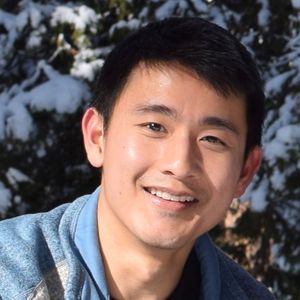OFFICE OF ACADEMIC APPOINTMENTS AND INTERNSHIPS
From Gutter Cats to Great Cats
The Journey of Craig Saffoe, Curator of Great Cats at the Smithsonian’s National Zoo
:focal(543x362:544x363)/https://tf-cmsv2-smithsonianmag-media.s3.amazonaws.com/filer_public/ce/dc/cedc1481-0baa-4763-9e55-7aa81efc4df2/craig_with_cub_4_days_14_july_2017.jpg)
Ever heard of a gutter cat?
Craig Saffoe, Curator of Great Cats, Andean Bears and Kids’ Farm at the Smithsonian National Zoo recounts childhood memories of exploring his neighborhood with friends, fetching balls from storm drains and eventually discovering that cats were living in them - “gutter cats” as he called them.
/https://tf-cmsv2-smithsonianmag-media.s3.amazonaws.com/filer_public/0f/62/0f629a6f-3ce8-4299-a4b0-2c115bca90fa/hobbes_fayetteville.jpg)
Craig grew up in North Carolina on the military base, Fort Bragg and like most young kids do when they see a homeless animal, Craig began to feed one of these gutter cats. Though his mother was not a fan of adopting a stray cat, Craig persisted and she eventually directed him to seek out a vet to give the cat proper medical care. Craig connected with a local vet named Dr. Robert Tygh, who encouraged Craig’s curiosities and involved him in the decision to spay his cat. In hindsight, Craig’s mother and Dr. Tygh were memorable career role models who guided his first impactful decision in animal management.
Though Craig does mention “passion can be fleeting at times”, for him it was not. This was just the first step in a long career in animal management.
Once he graduated high school and moved to North Carolina State for college, he then needed to materialize his passion into a college degree. Like many who enjoy working with animals, their first thought is to take on veterinary school, and Craig was no different. However, a course he took, anatomy and physiology of farm animals taught by Dr. Brenda Alston-Mills, brought Craig to a crossroads in his academic career. Craig credits Dr. Alston-Mills with having been his first professional mentor who had a profound impact as she helped him to realize his love of animal husbandry rather than continuing down the path of veterinary medicine. Craig remembers one particular conversation with Dr. Alston-Mills after class in which she questioned him about why he was a student in her class and why he wanted to be a veterinarian. He recounts it went a little something like:
“I get that you love animals, I get that you want to be a veterinarian, but do you love medicine?” I said “no” and she said, “Then sweetie, you're going to be the worst Veterinarian in the world.”
/https://tf-cmsv2-smithsonianmag-media.s3.amazonaws.com/filer_public/72/f6/72f6e91e-be4f-458a-8287-2e3f0f5d3f35/alston_mills.jpg)
/https://tf-cmsv2-smithsonianmag-media.s3.amazonaws.com/filer_public/53/3e/533e6ab2-84ba-4db8-8af1-c082fb81c2cd/john_seidensticker.jpg)
/https://tf-cmsv2-smithsonianmag-media.s3.amazonaws.com/filer_public/4d/29/4d29d359-2327-4f18-95c3-24dd36e23ffc/2019-6-29_stuart_and_craig.jpg)
/https://tf-cmsv2-smithsonianmag-media.s3.amazonaws.com/filer_public/ca/7d/ca7d07b4-360c-4ba4-b0ec-268d18219c69/amzap_logo_jpg.jpg)
So, back then and even more so now, Craig understands that providing a 19-year-old black student with the opportunity to work at the Smithsonian doesn’t always happen but it is an important reminder to continue efforts to increase diversity. Craig later founded the Association of Minority Zoo and Aquarium Professionals (AMZAP) - a network of professionals currently working in exotic animal care and conservation disciplines focused on increasing minority representation throughout the zoo and aquarium industry. One of Craig’s goals was to make sure that minority professionals and students are provided with the opportunity to engage with career interests within the animal management and conservation community.
/https://tf-cmsv2-smithsonianmag-media.s3.amazonaws.com/filer_public/ce/e1/cee1b2fb-79cd-43d6-ae2c-a13db60d2382/nzp_amzap_-_2021-7-23.jpg)
On the subject of diversity in the workforce, Craig states that “if we want to see the biggest representation of ideas, of thoughts and expansion of knowledge, that's where diversity really matters, because if you're only looking through one singular lens, you're only going to get that perspective. When you start to bring in these people from diverse backgrounds, you get other lived experiences, which means that you get more ideas. And not more ideas to take over but more ideas to include into that potential solution. And when you're dealing with an issue like conservation, you need as many ideas as you can get 'cause goodness gracious, we don't know what the recipe is for success... It's about opening the door so that there's equal competition and equal opportunities for everybody to compete for the positions that they feel passionate about.”
When asked how his career path might have been different if he hadn’t had the internship at the Smithsonian: “I think I would have probably gone back to finish school. I would have undoubtedly taken a job somewhere and again, if not for Doctor Alston-Mills, I would not have known what animal husbandry was and which route to take. So, I think if not for the Smithsonian and the zoo showing me this particular discipline and this route to focus on, I very well may have gone back to finish veterinary medicine and honestly, I think I would have been a very unhappy veterinarian.”
And what a full circle moment it was as he told us that as the Curator of lions and tigers, he is now in the same position and even the very same office that his mentor Dr. Seidensticker was!
/https://tf-cmsv2-smithsonianmag-media.s3.amazonaws.com/filer_public/ff/7c/ff7c46b6-50f0-47ae-abed-6dd5ef50be08/2023-3-1_coming_in_hot.jpg)
/https://tf-cmsv2-smithsonianmag-media.s3.amazonaws.com/filer_public/14/48/1448d35d-425b-4ddd-b764-f09dae62e273/lions__tigers__bears.jpg)


